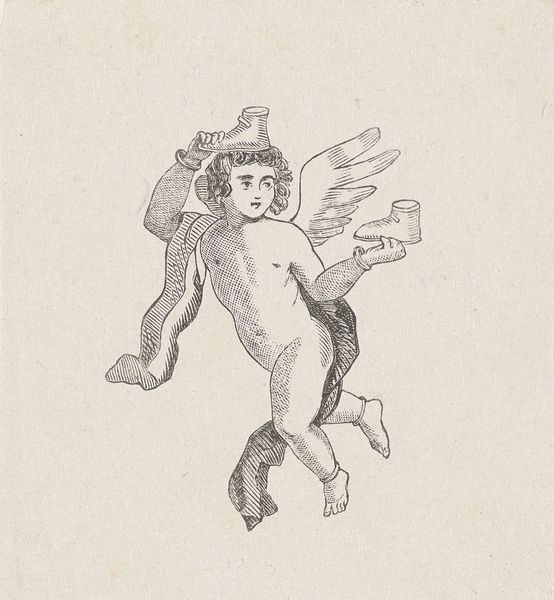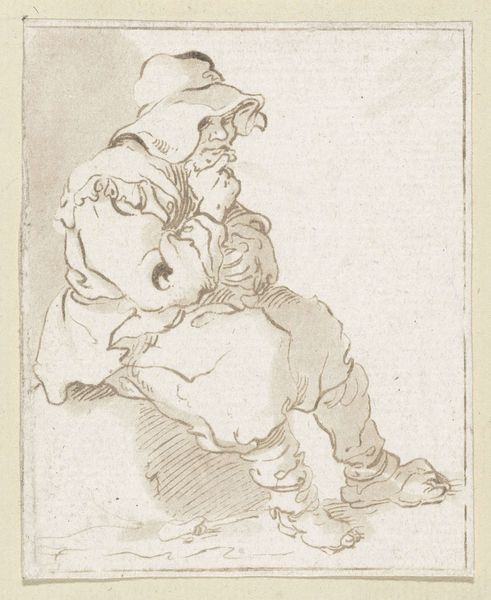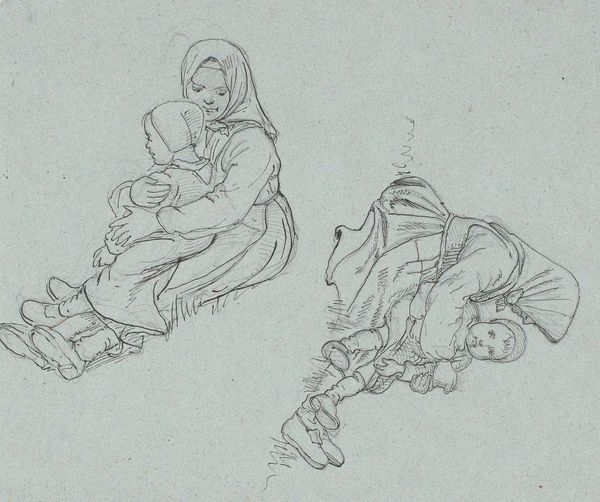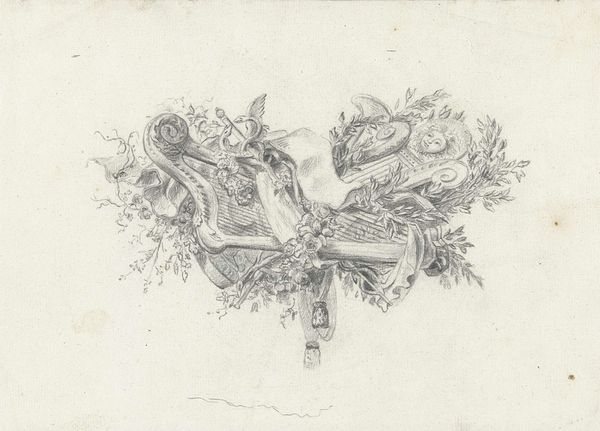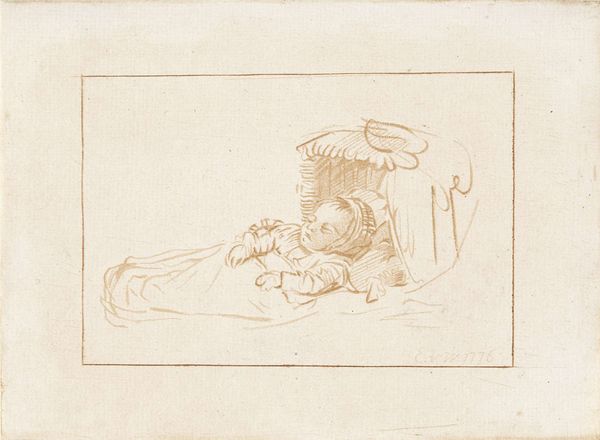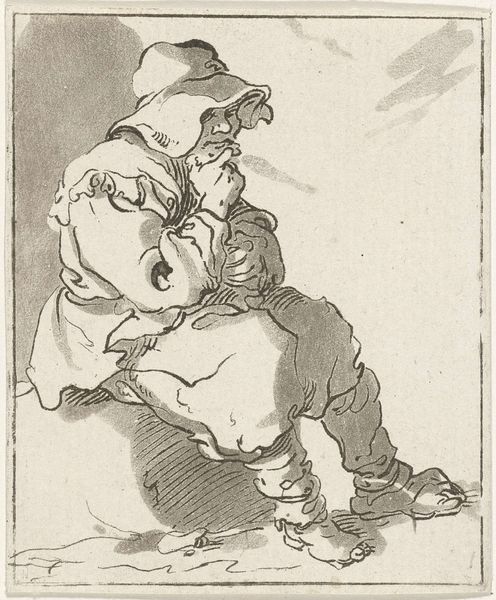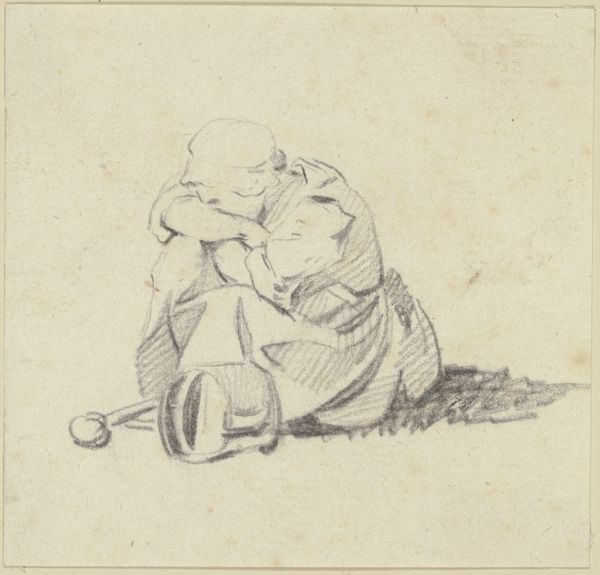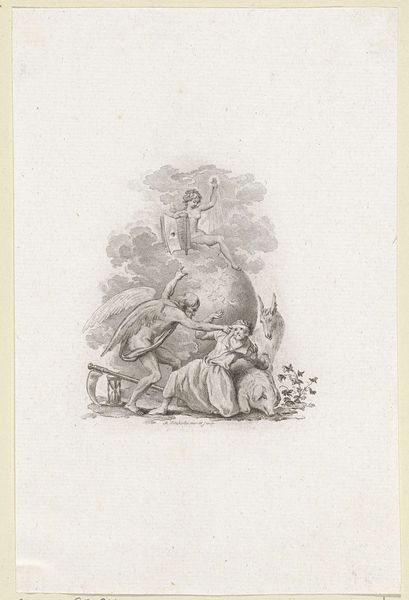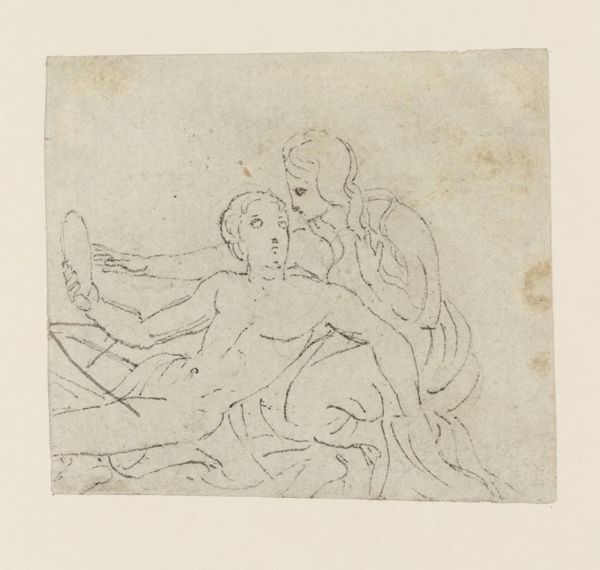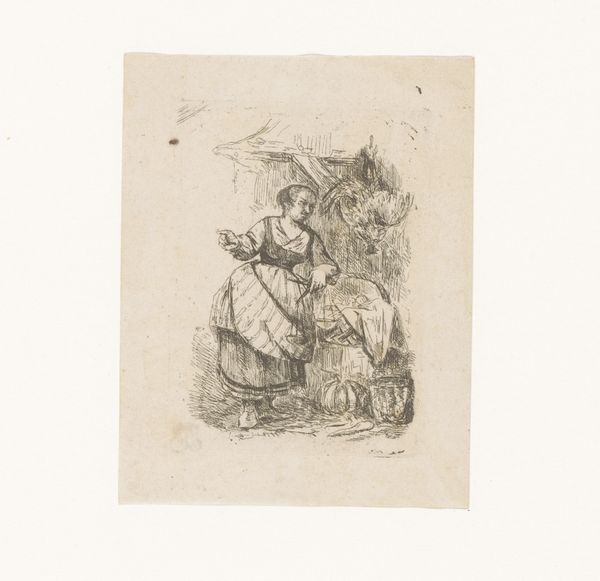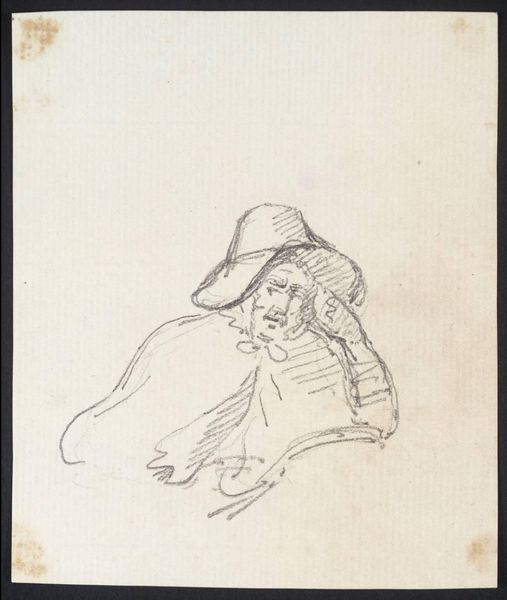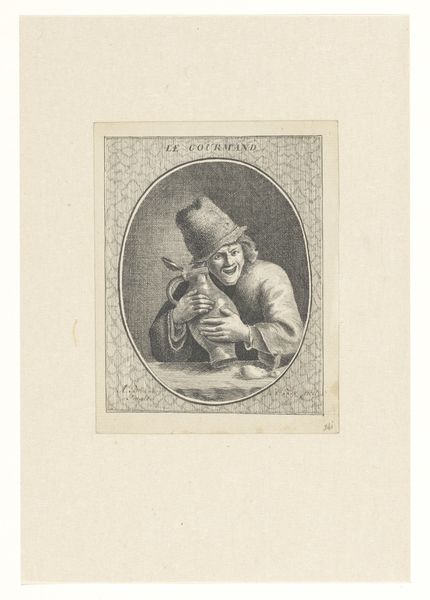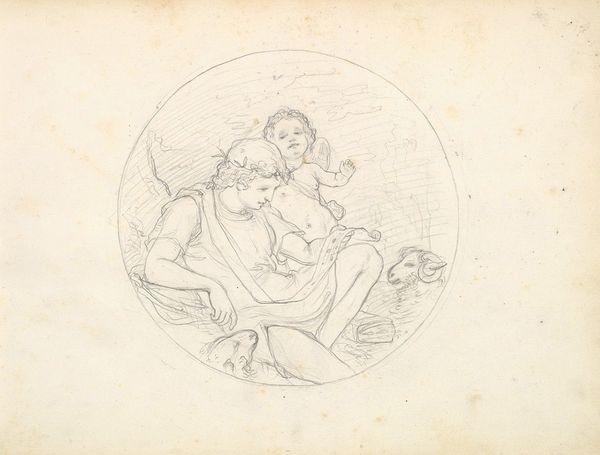
Draai van een foetus in de baarmoeder tegen het einde van de zwangerschap 1836 - 1912
0:00
0:00
drawing, ink
#
portrait
#
drawing
#
imaginative character sketch
#
light pencil work
#
quirky sketch
#
pencil sketch
#
figuration
#
personal sketchbook
#
ink
#
pen-ink sketch
#
line
#
sketchbook drawing
#
pencil work
#
academic-art
#
nude
#
sketchbook art
#
fantasy sketch
Dimensions: height 111 mm, width 101 mm
Copyright: Rijks Museum: Open Domain
Curator: I'm struck by the delicate linework; it gives a peculiar softness to what could be a very clinical image. Editor: Indeed. Here at the Rijksmuseum, we have “Draai van een foetus in de baarmoeder tegen het einde van de zwangerschap”—“Rotation of a Fetus in the Womb Near the End of Pregnancy.” This drawing, whose creation is attributed to Isaac Weissenbruch, likely dates between 1836 and 1912. It is crafted with pen and ink. Curator: The meticulous details outlining the fetal position—the feet tucked neatly, the curve of the spine—paired with the rather sterile rendering of the womb structure, it's a compelling duality. I see echoes of power dynamics here, particularly considering how medical illustrations like these historically have informed and shaped societal understandings, often to the detriment of marginalized groups. The pregnant body, dissected and displayed. Editor: That reading hinges upon the idea of exploitation, but let's not forget Weissenbruch's focus. He emphasizes precise anatomical form—observe the linear clarity. Notice also how the geometry articulates position in space. To that end, this piece aligns with the scientific drafts of its time; perhaps the piece aims for a purely formalistic goal, devoid of social intention. Curator: But can art truly be devoid of social intention? The artistic choices themselves—to display this private moment so clinically—are imbued with the sociopolitical context in which they were made. Who held the power, whose body was subjected to this scrutiny, and how that reflects historical narratives of bodily autonomy—these questions resonate powerfully here. Editor: Your reading foregrounds cultural dynamics, and it's not without warrant. Even so, to emphasize line quality again, note the precision, lending to its impact as well as making this rendering beautiful even despite the controversial elements. Curator: It is undeniably well executed, which further complicates my reading, that beauty serving as a potentially obfuscating agent that neutralizes the piece's ethical issues. Editor: Well, this was indeed illuminating, providing us with multiple ways of engaging with this drawing. Curator: Absolutely. It reveals just how potent even a seemingly simple image can be when viewed through different lenses.
Comments
No comments
Be the first to comment and join the conversation on the ultimate creative platform.
